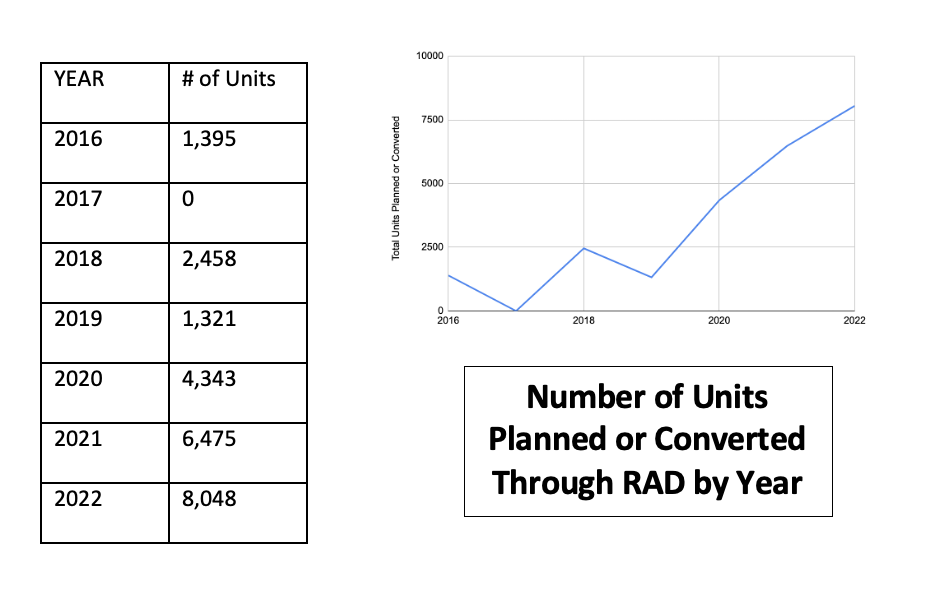Rental Assistance Demonstration or RAD is a federal program that was designed to address the deterioration of our national public housing stock. In short, the program allows public housing authorities to shift all or some of their public housing stock to a different federal subsidy stream, which also allows for private partners to step in to manage or finance the properties. The program was approved by Congress in 2012 under the Obama Administration, and implemented by the US Department of Housing and Urban Development (HUD) beginning in 2013. Though conceived of as an experimental program with a limit of 60,000 units, the program expanded rapidly with public housing authorities of all shapes and sizes and geographies applying to convert all or part of their portfolios to the RAD program. Today, the limit is set at 455,000 or nearly 40% of all public housing units nationally.

RAD/PACT in NYC
RAD first arrived in New York City (NYC) in 2015 and has proceeded at a similar pace. NYC’s uniquely-branded program, Permanent Affordability Commitment Together (commonly known as RAD/PACT) was first introduced as one of a few strategies for public housing outlined in Mayor’s De Blasio’s first plan for public housing, NextGeneration NYCHA, and greatly expanded in a subsequent iteration of the plan, NYCHA 2.0. Specifically, while the original 15,000-unit-pipeline was whittled down to a meager 1,700 units through the application and approvals process, NYCHA 2.0 expanded the pipeline to 62,000 units, with a third of those to be converted by the end of 2022.

Evaluations are Lagging, and Mixed, at Best
Officials evaluations of residents’ experiences of RAD conversion have not kept pace. Specifically, HUD’s 2016 report excluded resident perspectives entirely. After an evaluation by the Government Accountability Office in 2018 highlighted HUD’s lack of attention to resident experiences, HUD did include a resident evaluation in their 2019 report. While their assessment yielded positive reviews, their sample was irresponsibly small – less than 1% of households whose homes had converted by October 2018.
Meanwhile, independent evaluations are largely negative. The most significant study is also the most recent. In 2022, Human Rights Watch released an assessment of public housing and RAD in New York City which highlighted two key findings:
- RAD conversion had resulted in higher evictions at two of the six developments evaluated (Betances and Ocean Bay Houses)
- RAD lead to greater violations of tenants’ rights and protections.
In 2021, based on this research, they sent a letter to Congress demanding the fund public housing through Section 9 immediately.
What Next?
Review a presentation from March 29th, which gave an overview of some of the key evaluations, or return to the homepage and explore the evaluations for yourself!